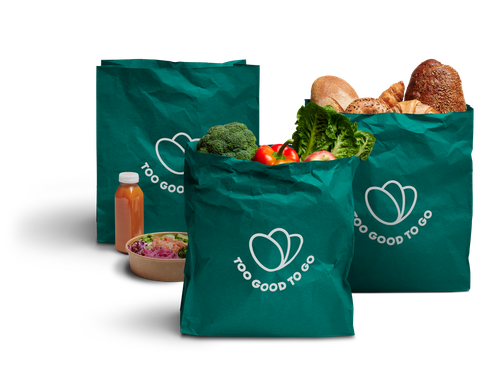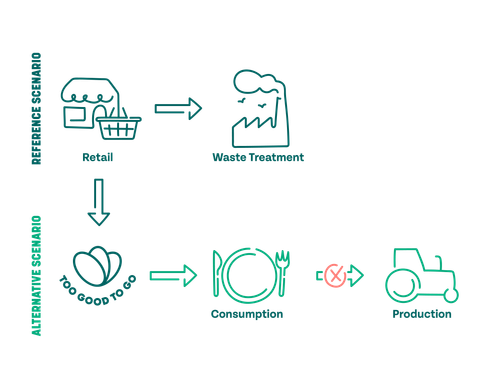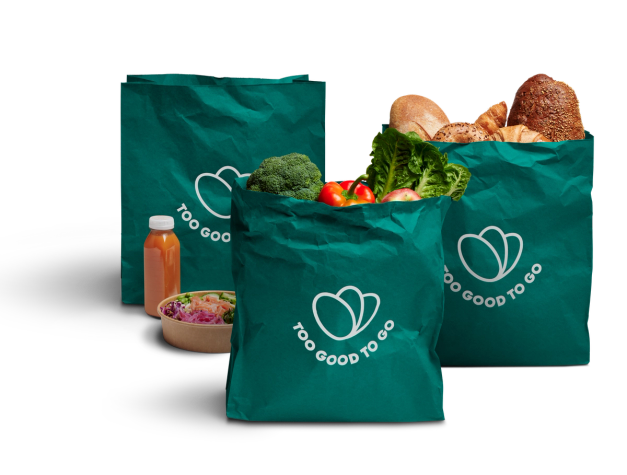OUR IMPACT CALCULATIONDISCOVER THE DATA AND METHODOLOGY BEHIND OUR IMPACT
DISCOVER THE DATA AND METHODOLOGY BEHIND OUR IMPACT
We partnered with Mérieux Nutrisciences | Blonk in 2024, a leading expert in food sustainability, to calculate the environmental footprint of each meal saved through Too Good To Go. This Life Cycle Assessment study was independently reviewed by three food sustainability expert representatives.

AN AVERAGE MEAL
AN AVERAGE MEAL
In our assessment and communication we define one meal as one Surprise Bag. This is our hero product sold on our marketplace for surplus food, for local users to collect in-store at the time set by the partners.
Our analysis began with the question: What does an average Surprise Bag contain? In 2023, we conducted internal research by measuring the weight of 150 randomly selected Surprise Bags in our most representative European and North American countries. This showed an average weight of 1.5 kg. We rounded down this number to 1 kg to account for the differences in the Surprise Bags types and take a more conservative approach.
One meal = One Surprise Bag = 1 kg of food (on average)
Too Good To Go Parcels is the business line targeting perfectly good surplus food sourced from manufacturers. Sold via the marketplace, Too Good To Go Parcels are delivered directly to the customer. We have accounted for the average volume of food we save per Too Good To Go Parcel. Based on this we assessed that one Too Good To Go Parcel is the equivalent of 5.8 kg (or meals) of food on average.

THE ANALYSED SCENARIOS
THE ANALYSED SCENARIOS
The environmental impact of food saved through Too Good To Go is the difference between the two scenarios:
First, what happens if food goes to waste (including all emissions associated with disposal) - the reference scenario.
Second, what happens when that same food is saved through Too Good To Go (considering avoided resource use, prevented waste emissions, bag packaging, transport to pick up the bag, and consumption) - the alternative scenario.

The assumptions and data behindKey assumptions
Key assumptions
Three main assumptions were made in this study.
- All saved food is truly surplus food.
- 90% of food items are consumed, i.e. 10% is wasted (based on research from Wageningen University and Research Centre - WUR, 2019).
- Customers save food via Too Good To Go rather than purchasing similar food.
- This means we assume that, when customers consume the food they save, they avoid purchasing an equivalent amount of food—thereby avoiding the need for its production.
Sensitivity analyses confirmed these assumptions, revealing no significant changes in the outcome if the assumptions were altered.
The assumptions and data behindPrimary data from Too Good To Go
Primary data from Too Good To Go
As a basis for the study we looked at how many Surprise Bags were saved across 17 different markets in 2022, and also how many Too Good To Go Parcels were rescued in 5 markets between 2022 and the first half of 2023. In order to assess the content of the bags we turned to our users via the Too Good To Go app. We selected the two most representative European markets at the time, and the US to illustrate the two main regions where Too Good To Go operates. Our users have the possibility to report the items in their purchased Surprise Bags to specify what food was saved e.g. sandwiches, pizza, pastries or breads.
The assumptions and data behindSecondary data
Secondary data
Mérieux Nutrisciences | Blonk, our sustainability consultancy partner maintains a comprehensive database containing Life Cycle Indices (LCIs) for various food categories. These LCIs meticulously track the environmental impact of a food product throughout its entire life cycle, encompassing raw material extraction, production and consumption. Additionally external data was used for assessing the impact of transportation, packaging and waste management.

OUR IMPACT CALCULATIONSO WHAT IS THE IMPACT OF SAVING ONE SURPRISE BAG* VIA TOO GOOD TO GO?
SO WHAT IS THE IMPACT OF SAVING ONE SURPRISE BAG* VIA TOO GOOD TO GO?
Based on this comparison, we found that rescuing just 1 kg of food helps avoid:
2.7 KGOF CO2E EMISSIONS
as producing and disposing of replacement food is no longer necessary.
2.8 M²OF LAND USE PER YEAR
as land is needed to produce new food to replace wasted food.
810LITRES OF WATER
as growing and processing food uses a lot of water.
OUR IMPACT CALCULATIONIF YOU WANT TO KNOW MORE…
IF YOU WANT TO KNOW MORE…